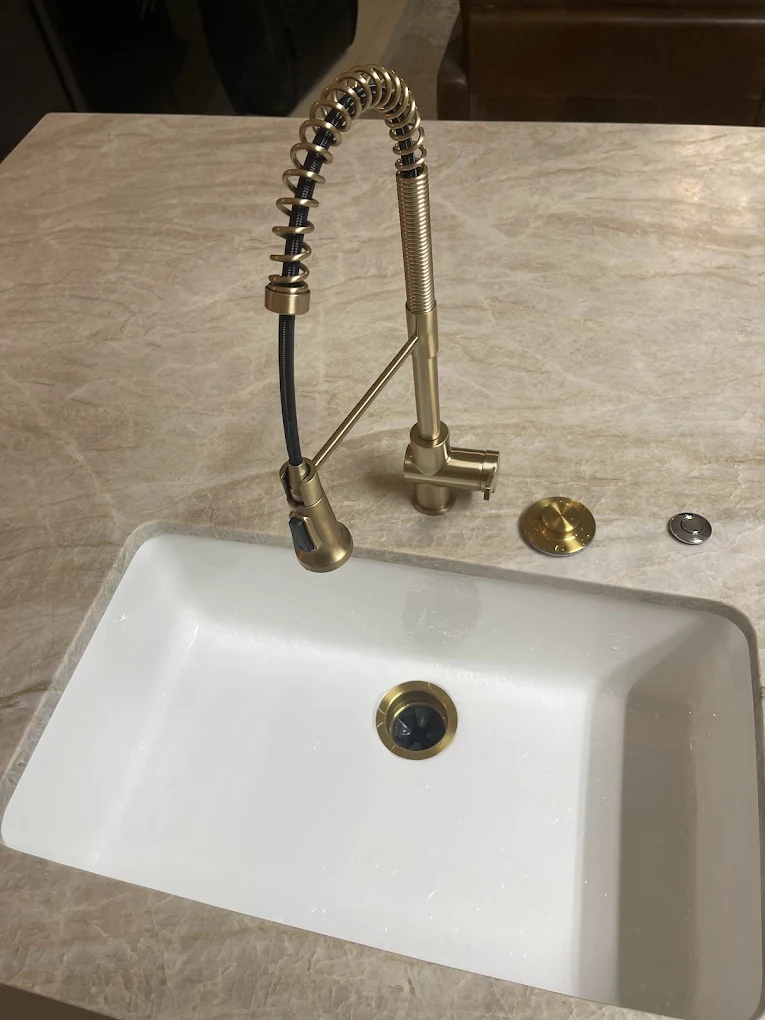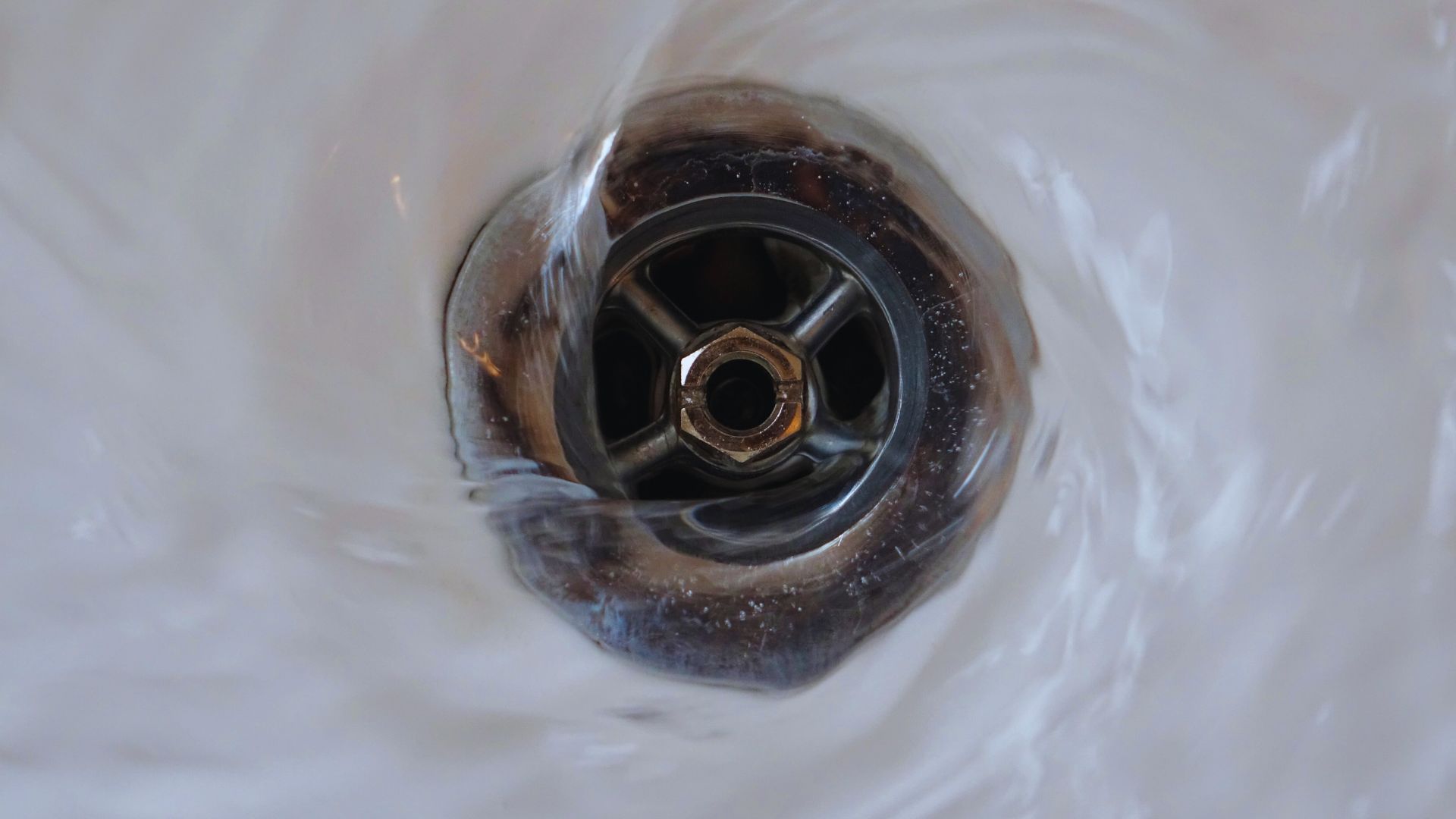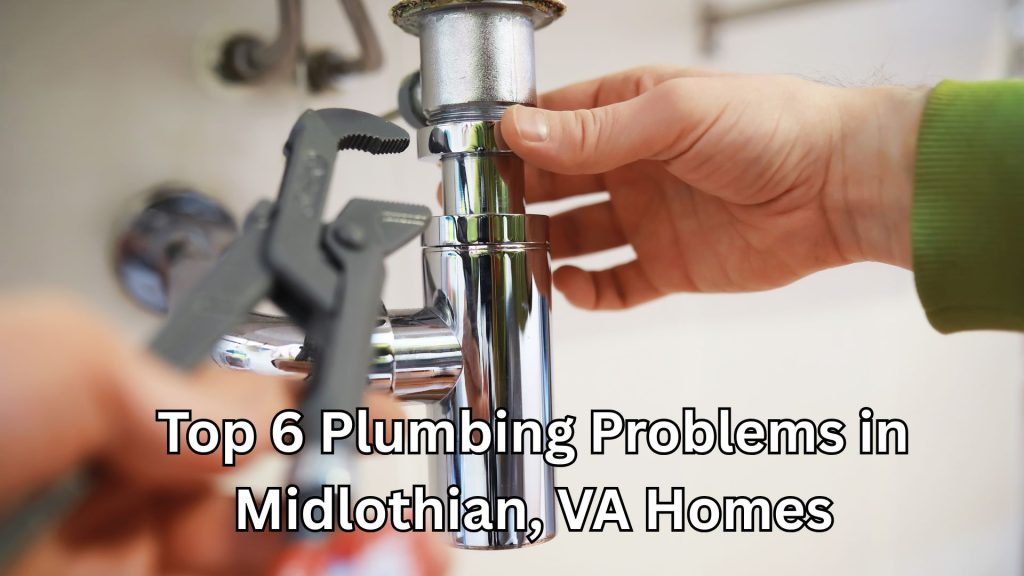Plumbing problems are common in Midlothian homes, and you can limit damage and protect your wallet by spotting signs early and acting decisively. This guide outlines the top seven issues—leaky faucets, clogged drains, running toilets, low water pressure, water heater failures, burst pipes, and sewer line trouble—and gives practical fixes, diagnostic tips, and clear guidance on when to handle repairs yourself and when to call a licensed plumber.
Key Takeaways:
- Fix small issues quickly—replace worn washers/O-rings, flappers, or fill valves and use a plunger or drain snake for clogs to avoid wasted water and higher bills.
- Watch for signs of bigger problems—multiple slow drains, low pressure, foul odors, wet spots, or unusual noises indicate sewer, pipe, or water‑heater issues that need professional inspection.
- Perform simple maintenance and act fast for emergencies—clean aerators/showerheads, flush the water heater, shut off the main water for burst pipes, and call a licensed plumber for complex repairs.
1. Leaky Faucets

A single faucet dripping once per second can waste over 3,000 gallons per year, costing you roughly $50–$200 depending on local rates. Check handles and spouts for steady drips and visible mineral buildup; worn washers, O-rings, or ceramic cartridges are the most common failures and usually reveal themselves when you disassemble the faucet for inspection.
Causes of Leaky Faucets
Worn rubber washers and O-rings account for most household leaks, especially in compression-style faucets. Cartridge or ball-valve failures occur in newer mixers, while hard water mineral buildup and corroded valve seats accelerate wear. Loose packing nuts or high household water pressure (over 60 psi) can also force seals to fail and produce persistent drips.
Quick Fixes for Leaky Faucets
Shut off the local supply valve, remove the handle, and inspect seals; replacing a washer or O-ring often stops leaks in 15–30 minutes. Clean or replace aerators to remove drip-causing debris, use plumber’s tape on threaded fittings, and tighten packing nuts gently—avoid over-torquing, which can damage components.
Bring the old washer, O-ring, or cartridge to the hardware store to match sizes—common kits list part numbers for Delta, Moen, and Kohler. Use an adjustable wrench, flathead and Phillips screwdrivers, a small pick for O-rings, and silicone plumber’s grease on new seals. After reassembly, open the shutoff slowly and test for leaks; persistent seepage or corroded valve bodies means you should schedule a professional inspection.
2. Clogged Drains

You’ll see slow drains, gurgling toilets, or standing water when clogs form; isolated slowdowns usually point to localized hair or food buildup, while simultaneous sluggishness in multiple fixtures within 24–48 hours often signals a deeper issue in the main line. DIY fixes like a plunger or a 10–25 ft hand auger clear many blockages, but persistent backups, bad odors, or sewage backups warrant a professional camera inspection to pinpoint the problem.
Common Causes of Clogs
Hair and soap scum create dense mats in bathroom traps, while kitchen grease cools and hardens inside pipes, trapping food particles; coffee grounds and starchy potato peels swell and bind. Flushing “flushable” wipes or feminine products leads to frequent sewer clogs, and tree roots exploit small cracks in older clay or cast-iron mains, sometimes collapsing lines entirely
Effective Clearing Methods
A flanged plunger often dislodges sink or toilet clogs in minutes; a hand auger (10–25 ft) reaches bathroom traps, while a drum or motorized cable can snake 50+ ft into main lines. Enzymatic cleaners break down organic buildup overnight; avoid regular use of caustic chemical drain cleaners. Hydro-jetting at the line level removes grease and roots but should be done by pros after a camera scan.
3. Running Toilets
Listen for a steady hissing or splashing and watch your tank’s waterline for fluctuations; a dye test (drop food coloring in the tank and check the bowl after 10 minutes) quickly confirms a leak. Inspect the flapper for warping, the chain for slack or snagging, and the fill valve/overflow tube for improper height. Running toilets can waste up to 200 gallons per day, so pinpointing the failing component saves both water and money.
Solutions to Stop the Running
Start by shutting off your toilet’s water supply, then replace a worn flapper ($5–$15, 10–20 minutes) or install a new fill valve ($15–$40, 20–45 minutes) if it won’t shut off. Adjust the float so water sits about 1″ below the overflow tube and clear mineral deposits with white vinegar or a soft brush. Consider upgrading toilets older than 20 years to low-flow 1.28 gpf models for long-term savings.
A quick DIY sequence often fixes the issue: turn the shutoff, flush to drain the tank, inspect and clean the valve seat, remove and swap in a universal flapper, then test with dye for 10 minutes. Persistent hissing after those steps usually means the fill valve or a cracked tank—call a plumber if you can’t stop the leak. Flappers typically last 3–5 years; proactive replacement prevents repeated waste.
4. Low Water Pressure

Noticing weak flow at your shower or kitchen faucet often means pressure has dropped below the comfortable 40–60 psi range most homes have; anything under ~30 psi feels noticeably weak. You can clear aerators and showerheads of mineral scale or test pressure with a hose bib gauge to confirm the problem before assuming a larger issue like corroded pipes or a failing pressure-reducing valve (PRV).
Factors Contributing to Low Pressure
Several common causes knock your household pressure down: mineral buildup in fixtures, partially closed valves, damaged or corroded supply lines, a malfunctioning PRV, or an active leak that wastes flow before it reaches fixtures.
- Hard water mineral deposits can restrict aerators and showerheads within weeks to months.
- Partially closed main or shutoff valves often look open but reduce flow by 30–50%.
- Older galvanized piping corrodes internally, narrowing the bore over decades.
- Assume that sudden, whole-house pressure loss points to a municipal supply issue or a major leak near your main line.
5. Water Heater Problems
Common Water Heater Issues
Sediment buildup, a failing thermostat, or a damaged heating element are common reasons your hot water becomes lukewarm or inconsistent; tank units typically last 8–12 years while tankless systems often run 15–20 years. You may hear rumbling from trapped sediment, see rusty water, or notice the T&P valve leaking; small fixes like flushing or element replacement can restore performance, but complex failures or gas-pilot issues usually require a certified water heater technician.
Sediment accumulation reduces tank capacity and causes rumbling noises, while electric heaters commonly fail at the heating element and gas units suffer pilot or thermocouple faults. Anode rods corrode within 2–3 years in hard water areas, accelerating tank rust, and slow recovery rates or frequent temperature swings often mean the thermostat or burner needs attention.
Maintenance Tips for Longevity
Flush your tank annually to remove sediment, set the thermostat to 120°F to save energy and limit scalding, and inspect the T&P valve every six months. Replace the anode rod every 2–3 years if heavily corroded, insulate accessible hot-water pipes, and schedule a professional inspection yearly to catch hidden problems before they become failures.
- Flush the tank once a year to clear sediment that reduces efficiency and shortens service life.
- Test the T&P valve every 6 months and replace it if it fails to open and reseat properly.
- Assume that if the anode rod is more than 50% consumed or the unit is over 12 years old, replacement may be the most cost-effective option.
Hard water in Midlothian accelerates scale and anode corrosion, so you might need to flush more than once yearly or install a water softener; tankless units typically require descaling annually if hardness exceeds 7–10 grains per gallon. You can extend element life by avoiding temperature settings above 140°F, and document service dates—technicians can often predict failure based on sediment levels, anode wear, and heat-exchanger condition.
- Insulate the first 3–6 feet of hot and cold supply pipes to reduce heat loss and speed recovery.
- Keep the thermostat at 120°F to balance comfort, energy use, and element longevity.
- Assume that routine professional inspections will save you money by catching leaks, corrosion, or failing components before they require full replacement.
6. Burst Pipes

A burst pipe can flood floors, ceilings, and walls in minutes—water expands about 9% when it freezes, so a small freeze crack can become a full rupture. Shut off your home’s main water supply immediately, move valuables away from the leak, and contain flow with buckets or towels while you call a licensed plumber.
Causes of Burst Pipes
Freezing temperatures (often when ambient temps fall below ~20°F), sustained high pressure, corrosion from age, and clogs that create trapped pressure are common causes. Typical residential water pressure runs 40–60 psi; sustained pressure above 80 psi stresses joints and fittings. Ground shifting, tree roots, and poor installation practices also raise the risk of a sudden rupture in older or compromised piping.
Immediate Actions to Take
Locate and shut off your main water valve, turn off electrical power near the affected area, open faucets to drain remaining water, and use buckets or towels to limit damage. Photograph the scene for insurance, move furniture and electronics away, and call an emergency plumber right away so a professional can assess repairs and minimize structural damage.
To locate your main shutoff, check near the water meter (typically at the street or in a basement), at the perimeter where water enters the house, or inside a utility closet; turn clockwise to close. If a pipe is frozen but intact, start thawing at the faucet end using a hair dryer or electric heat tape—never use an open flame. For a temporary patch on a small rupture, wrap rubber (from a garden hose or inner tube) around the leak and secure with a hose clamp or heavy-duty duct tape until a plumber replaces the section. If flooding is significant, shut off the breaker for any affected outlets, call a water damage mitigation service, and keep detailed photos and notes for your insurance claim.
Summing up
Hence you should tackle leaks, clogs, running toilets, low pressure, water heater faults, burst pipes, and sewer issues promptly with DIY fixes where safe, regular inspections, and timely professional service to prevent costly damage—shut off water for bursts, replace worn parts, clear drains, flush heaters, and schedule sewer inspections to keep your Midlothian home functioning reliably.
Need a Reliable Plumber or HVAC Expert in Midlothian, VA?
Since 1996, Midlothian Mechanical has been the trusted name for heating, cooling, air quality, and plumbing services across Central Virginia. From leaky faucets and clogged drains to full water heater replacements and 24/7 emergency repairs, our licensed technicians deliver fast, professional service with upfront pricing.
We’re not just fixing problems—we’re protecting your home, comfort, and peace of mind.
Call us anytime at (833) 611-4859 or request your quote online today!

